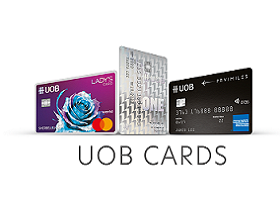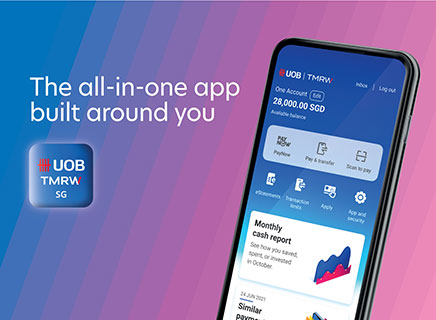Gold prices have soared by more than 30 per cent since the start of 2024, reaching a record high of just under US$2,800 (S$3,754) per ounce by late October. It dipped to around US$2,600 per ounce following Donald Trump’s victory in the US elections on Nov 6.
What’s driving the surge?
Mr Heng Koon How, head of Market Strategy, Economics and Treasury Research at UOB, points to two groups of investors:
- Central banks in Asia – including Singapore – and emerging markets that are increasing their allocation of reserves into gold, and;
- Retail investors who are rushing to buy physical gold and jewellery amid economic and geopolitical uncertainties.
On the central bank front, “China (in particular) caught everyone’s attention with its strong allocation into gold”, Mr Heng, says.
According to the World Gold Council (WGC), China’s official holding of gold rose 20 per cent from 1,900 tonnes just two years ago to about 2,264 tonnes as of Oct 2024. This accounts for more than 5 per cent of the country’s total reserves.
Typically, central banks in Asia and emerging markets hold less than 5 per cent of their balance sheets in gold, explains Mr Heng, while those in Europe and developed markets hold an average of 10 per cent or more.
But the elevated risk of global trade conflicts and sanctions are motivating central banks in Asia and emerging markets to increase their allocation, he says.
An annual WGC survey of global central banks published in June found that central banks in emerging markets cite gold’s immunity to sanction risks and pessimism towards the US dollar as two top reasons for allocating more reserves into gold.
WGC also notes that the Monetary Authority of Singapore purchased 75 tonnes of gold in the first nine months of 2023. This makes Singapore’s central bank the third-largest buyer of gold in the world after China and Poland.
Meanwhile, more retail investors globally are buying physical gold products like gold wafers and nuggets as a hedge against increasing uncertainty.
Across Asia, retail investors are flocking to stock up on physical gold in countries like China, Thailand and Vietnam. Singapore banks noted an increase in young retail investors turning to gold as an affordable investment option. Among UOB’s gold investors, the proportion of customers aged 30 to 40 rose 25 per cent between Dec 2021 and April 2024.
The trend is fuelled by geopolitical risks, Mr Heng explains, pointing to the Russia-Ukraine and Israel-Palestinian conflicts, and “currency depreciation across emerging markets and in Asia over the past few years”.
Is now a good time for you to invest in gold?
In general, a key advantage of investing in gold, notes Mr Heng, is that it will diversify the risk of an investment portfolio and help reduce volatility.
For regular investors, gold can serve as a hedge against inflation and is considered a relatively safe haven due to its overall price stability.
Overall, gold has been “a relative oasis of calm” amid elevated volatility in global markets this year, Mr Heng observes.
Trump’s election win earlier this month prompted a gold sell-off, causing prices to fall from US$2,750 to US$2,600 per ounce. But the outlook remains positive for gold, Mr Heng says.
“Over the medium to longer run, volatility in the financial markets, ongoing global geopolitical risk and elevated policy risk under the next Trump administration may lead to even stronger safe haven demand for gold.”
UOB forecasts that gold prices will eventually reach US$3,000 per ounce by the third quarter of next year, he says.
However, sudden interest rate increases could derail the current price trajectory, Mr Heng warns. If the US Fed and other global central banks unexpectedly stop cutting rates, or start hiking interest rates, gold prices could fall.
How much gold should you own?
This depends on your own risk tolerance. A 3 to 5 per cent portfolio diversification into gold is a prudent starting point, says Mr Heng.
He also notes that unlike other types of investments, gold does not generate regular returns in the form of interest or dividends. Hence, investors need to consider this opportunity cost when choosing gold over investments like stocks and bonds.
MoneySense, Singapore’s national financial education programme, highlights that all investments come with risks.
It’s important to understand your own risk appetite, and the investment product’s risks and features before investing. Your risk appetite should be defined by how much you can afford to lose, rather than how much you want to make, MoneySense notes.
How can you start investing in gold?
If you’re interested in investing in gold, here are a few ways to get started.
- Buy physical gold
As tangible assets, physical gold such as gold bars and coins can provide investors with a sense of ownership. However, holding physical gold requires storage and security, and this can be costly.
UOB is the only bank in Singapore that offers physical gold investments for clients. They can be bought and sold at UOB’s main branch (at UOB Plaza 1). Existing UOB internet banking users can also buy gold online and collect the gold pieces at UOB’s main branch within five working days.
- Buy gold certificates
Offered by banks including UOB, gold certificates allow you to own gold without worrying about storage. The certificates are proof of ownership and can be exchanged for cash or physical gold. These are sold in kilobars, at up to 30 kilobars per certificate.
However, gold certificates rely on the issuing institution’s credibility and stability. If the issuing institution faces financial issues, redeeming the certificate could become difficult.
- Through gold exchange-traded funds (ETFs)
Gold ETFs track the price of gold and can be bought and sold on the stock exchange, through brokerage accounts. They offer a way for you to invest in gold without tying up a big part of your capital with physical gold.
Gold ETFs typically have low fees since no physical storage is required. But they may not accurately track the actual price movements of gold.
- Use a gold savings account
Several banks in Singapore, including UOB, offer gold savings accounts that allow you to buy and sell gold digitally without holding physical gold. The transactions are managed by the banks.
Similar to gold certificates, gold savings accounts rely on the credibility of the bank. You can invest in small amounts at the current market price. For example, the UOB Gold Savings account allows investors to make a minimum transaction amount of five grammes, priced at S$567.60 as of Nov 20.
Related articles
First published in Rethink Your Wealth, a series that provides practical insights and answers on wealth-related topics, to help you transform the way you approach finances.
This publication is for general information and general circulation only and does not have any regard to the specific investment objectives, financial situation and particular needs of any specific person. The information contained in this publication (including any past performance trends of certain investment products referred to in this publication) shall not be regarded as an offer, recommendation, solicitation or advice to buy or sell any investment product and shall not be transmitted, disclosed, copied or relied upon by any person for whatever purpose. Any description of investment products is qualified in its entirety by the terms and conditions of the investment product and if applicable, the prospectus or constituting document of the investment product. Nothing in this publication (including any articles referred to in this publication) constitutes accounting, legal, regulatory, tax, financial or other advice. If in doubt, you should consult your own professional advisers about issues discussed herein.
You may wish to seek advice from a financial adviser before purchasing units in any unit trust (the "Fund"). In the event that you choose not to seek advice from a financial adviser, you should consider carefully whether the Fund in question is suitable for you. Past performance of the Fund or the manager of the Fund (the "Fund Manager"), and any economic and market trends or forecast, are not necessarily indicative of the future or likely performance of the Fund or the Fund Manager. The value of units in the Fund, and any income accruing to the units from the Fund, may fall or rise. You should note that your investment is exposed to fluctuations in exchange rates if the base currency of the Fund and/or underlying investment is different from the currency of your investment. The Fund may use or invest in financial derivative instruments and you should be aware of the risks associated with investments in financial derivative instruments which are described in the Fund's prospectus. The UOB Group may have interests in the Units and may also perform or seek to perform brokering and other investment or securities-related services for the Fund. You should read the prospectus, available from the respective Fund Manager or its distributors, before deciding to subscribe for or purchase units in the Fund. Applications for units of the Fund must be made on the application forms accompanying the prospectus. Investments in unit trusts are not obligations of, deposits in, or guaranteed or insured by United Overseas Bank Limited ("UOB"), United Overseas Bank Asset Management Ltd, Fund Manager or any subsidiary or associate of UOB or any of their affiliates, or by any distributors of the Fund, and are subject to risks, including the possible loss of the principal amount invested. No representation or promise as to the performance of the Fund or the return on your investment is made. There is no guarantee that the Fund will meet its investment objectives.
The information contained in this publication, including any data, projections, underlying assumptions and any articles referred to in this publication, are based on certain assumptions, management forecasts and analysis of known information and reflects prevailing conditions as at August 2024, all of which are subject to change at any time without notice. Although every reasonable care has been taken to ensure the accuracy and objectivity of the information contained in this publication, UOB and its employees make no representation or warranty of any kind, express, implied or statutory, and shall not be responsible or liable for its completeness or accuracy. As such, UOB and its employees accept no liability for any error, inaccuracy, omission or any consequence or any loss/damage howsoever suffered by any person, arising from any reliance by any person on the views expressed or information herein.
This advertisement has not been reviewed by the Monetary Authority of Singapore.















